How To Find Shopify Stores To Inspire Yours?
Ever wondered how the pros find inspiration for their Shopify stores? Do you want to learn how to find Shopify stores for yourself?
Dive into the secrets of scouting successful shops to dodge blunders and spark your creativity.
Why bother? It’s the shortcut to sidestepping slip-ups and building on proven wins.
In this guide, I spill the beans on methods to unearth inspiring Shopify stores. I’ll uncover diverse methods, tools, and techniques to discover inspiring Shopify stores.


Table of Contents
- Key Takeaways
- Why To Use Shopify Stores For Inspiration?
- 1. Leveraging Search Operators & SERP
- The No. 1 Tool for all dropshippers – now with AI
- 2. Explore Online Directories and Marketplaces
- 3. Use Social Media and Forums for Discovery
- 4. Chrome Extensions and Tools for Store Finding
- 5. Unconventional Strategies to Uncover Hidden Shopify Stores
- Inspire Your E-commerce Journey with Inspiration from Shopify Stores
- How To Find Shopify Stores FAQs
- 1. How can I assess the credibility and performance of the Shopify stores I find?
- 2. What are the common challenges or pitfalls to avoid when searching for Shopify stores for inspiration, and how can they be overcome?
- 3. How do you evaluate the success of a Shopify store before deciding to draw inspiration from it?
- 4. Are there specific examples of Shopify stores that were transformed by inspiration from others?
- 5. How can someone ensure that their use of inspiration does not cross into copying or infringement?
- Conclusion
Key Takeaways
From my article about how to find Shopify stores, here are the key takeaways neatly categorized under each section and sub-heading:
How do the pros find inspiration for their Shopify stores?
- Introduction to the importance of finding inspiration from successful Shopify stores to avoid common mistakes and innovate.
Why To Use Shopify Stores For Inspiration?
- Avoiding pitfalls and innovating by studying successful stores.
- Understanding the benefits of drawing inspiration for Shopify store improvement.
- Leveraging Search Operators & SERP
- Using Google search operators to find niche-specific stores.
- Advantages and limitations of using search operators.
Explore Online Directories and Marketplaces
- Utilizing BuiltWith and niche-specific directories to discover successful Shopify stores.
- Analyzing store strategies, technologies used, and market trends.
Use Social Media and Forums for Discovery
- Harnessing social media platforms (Instagram, TikTok, Pinterest) and forums for discovering trending stores and products.
Chrome Extensions and Tools for Store Finding
- Utilizing Chrome extensions and online tools (Shopify Store Locator, EcomHunt, Wappalyzer, MyIP.ms) for finding and analyzing Shopify stores.
Unconventional Strategies to Uncover Hidden Shopify Stores
- Discovering stores using the “Powered by Shopify” phrase, unique store identifiers, and advanced Google search techniques.
Inspire Your E-commerce Journey with Inspiration from Shopify Stores
- Emphasizing the importance of maintaining brand identity and staying updated with industry trends while drawing inspiration.
Top 5 Shopify Stores For Sale To Purchase Today
- Listing examples of Shopify stores for sale across various niches with details on their performance and unique selling points.
How To Find Shopify Stores FAQs
- Addressing common questions on assessing store credibility, avoiding pitfalls in searching for inspiration, evaluating store success, examples of transformation through inspiration, and ensuring ethical use of inspiration.
So, my article provides a comprehensive guide on how to find Shopify stores, covering methods, tools, and considerations for leveraging successful practices while maintaining originality and brand integrity.
Why To Use Shopify Stores For Inspiration?
When you’re creating or improving your Shopify store, it’s important to find inspiration from other successful stores.
This can help you avoid mistakes and come up with innovative ideas based on what’s already working.
Why find inspiration?
- Avoid common pitfalls: By looking at successful stores, you can learn from their mistakes and avoid making the same ones.
- Innovate and adapt: Studying established businesses gives you a foundation to build upon and come up with new ideas.
In this guide, I’ll show you how to find Shopify stores that can inspire your own. We’ll cover a variety of methods, tools, and techniques to help you in your search:
- Search Operators & SERP: Use specific search terms and search engine results pages (SERPs) to find niche-specific Shopify stores.
- Online Directories and Marketplaces: Explore directories and marketplaces where experienced merchants showcase their products and knowledge.
- Social Media and Forums: Engage with communities on social media platforms and forums to discover stores that are popular in current trends.
- Chrome Extensions and Tools: Install helpful extensions and tools for tasks like identifying stores and analyzing competitors.
- Unconventional Strategies: Try out unique approaches that could lead you to hidden or lesser-known Shopify stores.
With these strategies, you’ll be well-equipped to navigate the world of e-commerce and gather valuable insights for your own Shopify store’s success.
So, let’s start with each of them!
👉 Learn How To Set Up Your First Store On Shopify [No.1 Beginners Guide].
1. Leveraging Search Operators & SERP
When it comes to finding Shopify stores for inspiration, you can make use of Google search operators. These are special characters and commands that extend the capabilities of regular text searches.
Thus, by using search operators effectively, you can discover niche-specific Shopify stores right from Google’s search engine results page (SERP).
How to use search operators:
- Start by typing
site:myshopify.cominto the Google search bar. This operator tells Google to limit the search results to sites on the ‘myshopify.com’ domain. - Next, add your niche keyword after the operator, like this:
site:myshopify.com "organic skincare". - You can also use the
inurl:operator before ‘.myshopify.com’ to find stores whose URLs contain specific words, like this:inurl:.myshopify.com "organic skincare".
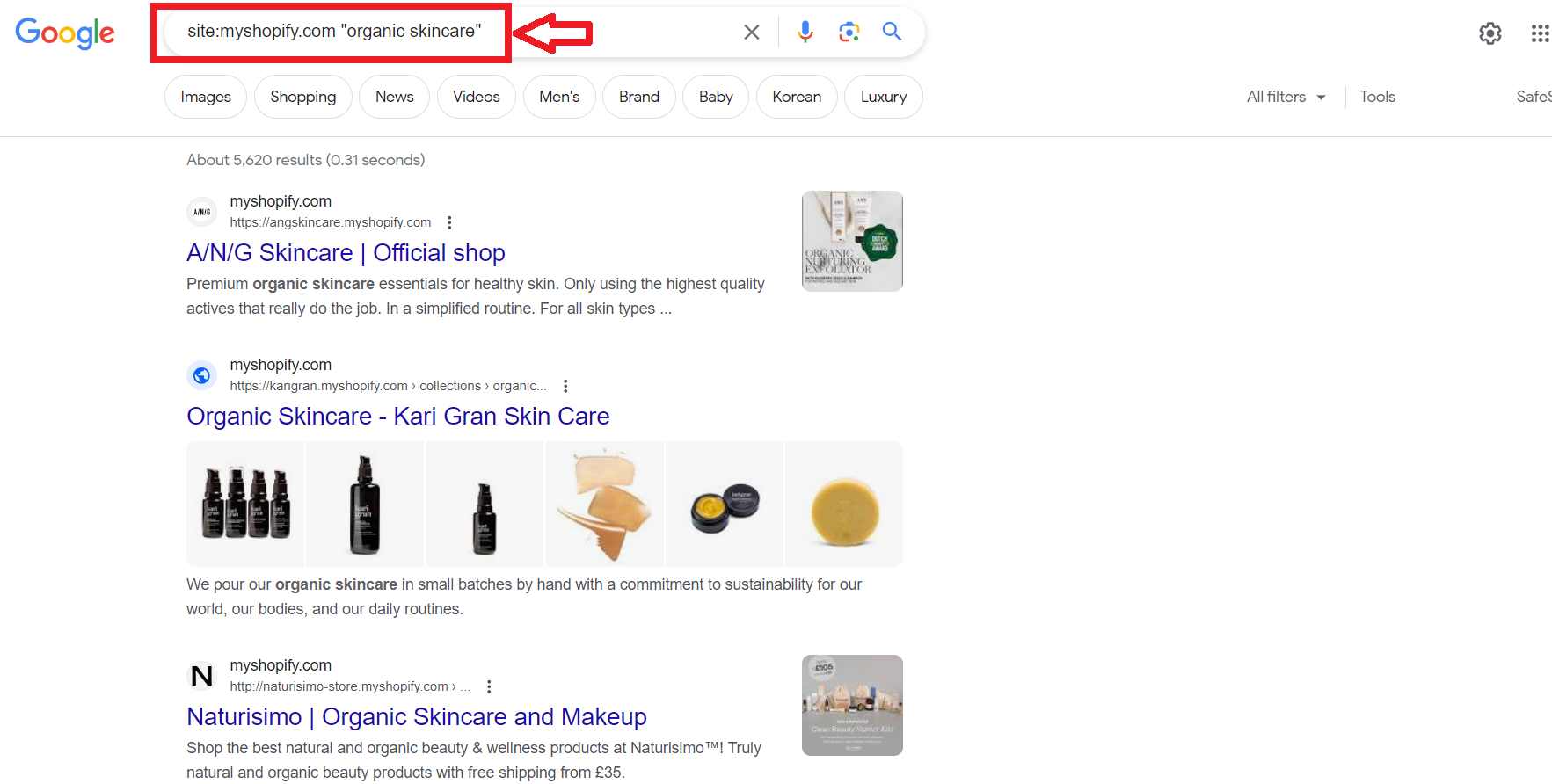
These methods will help you find Shopify stores in your specific niche right from Google’s SERP.
✅ Advantages of using search operators:
Using search operators has several advantages:
- They provide a quick way to discover relevant Shopify stores.
- They do not require any additional tools or extensions.
- They offer precise control over your search criteria.
❌ Limitations of using search operators:
However, there are a few limitations as well:
- Some stores may not be indexed by Google and hence might not show up in the search results.
- This method might not reveal newly established or less popular stores due to SEO competition.
Despite these limitations, using Google search operators is a highly effective way to start your hunt for inspiring Shopify stores.
2. Explore Online Directories and Marketplaces
When it comes to finding Shopify stores to gain inspiration from, there are a few online directories and marketplaces that can be incredibly helpful.
Thus, these platforms provide a wealth of information on different stores, allowing you to analyze their strategies and learn from their successes.
Using BuiltWith Directory
One such resource is the BuiltWith directory. Here’s how you can use it effectively:
- Go to the BuiltWith website and access its Technology Lookup feature.
- Enter the URL of a competitor’s site or use relevant keywords to search for Shopify stores.
- Utilize filters available to sort the results based on factors like traffic volumes or specific technologies used by the stores.
- Look into technology trends within your niche market to gain additional competitive intelligence.
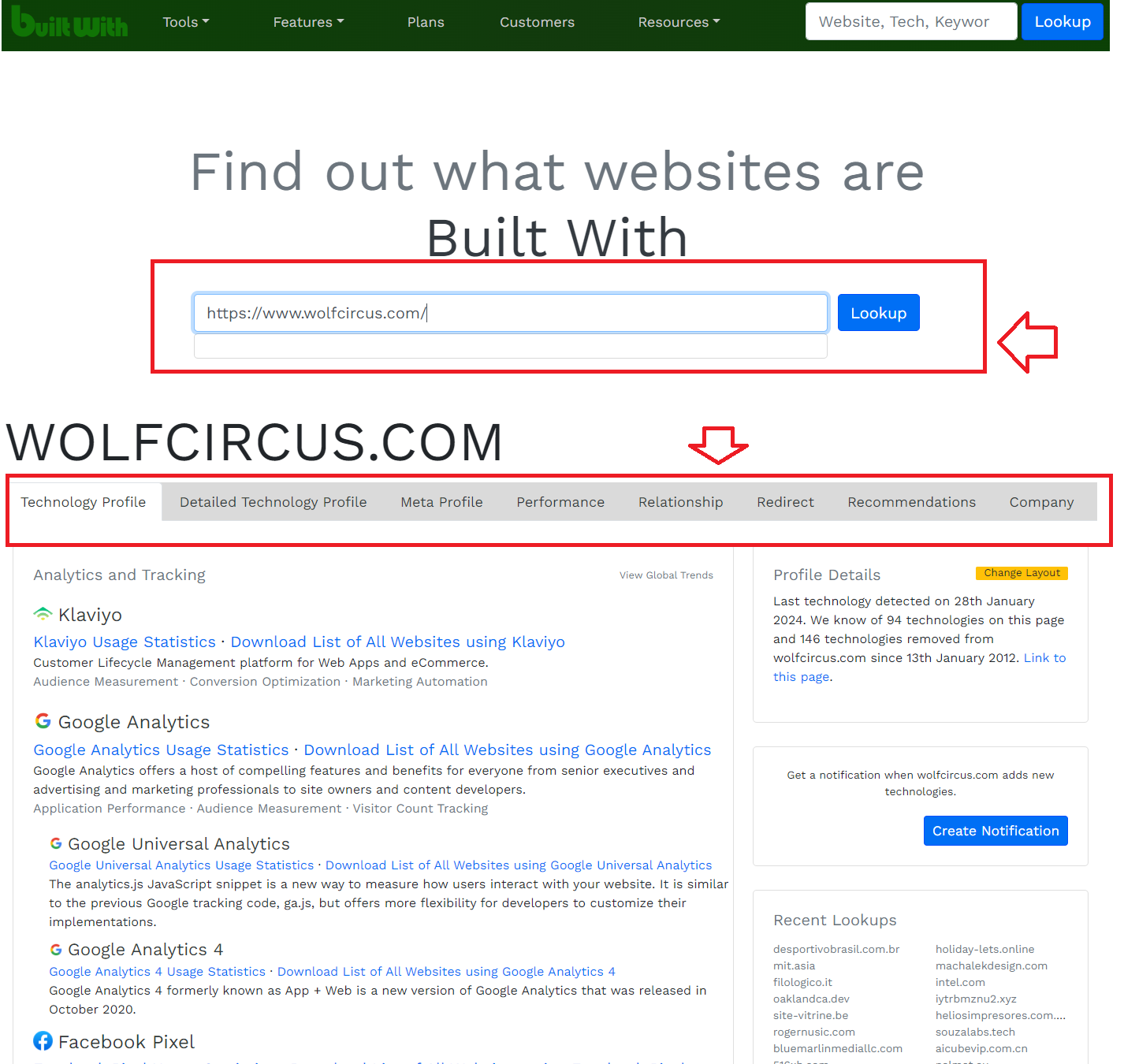
Checking Niche-Specific Directories
In addition to these general directories, there are also niche-specific ones that focus on particular industries. So, when it comes to how to find Shopify stores, two examples are FashionAtlas for fashion retailers and BeautyFinds for beauty-related businesses.
Here’s how they can be helpful:
- Explore these directories specifically tailored to your industry.
- Search within these platforms to analyze strategies implemented by top-performing niche players.
By leveraging these resources, you can simplify the process of discovering Shopify stores that resonate with your target market.
I suggest checking out Empire Flippers if you’re looking for ready-made dropshipping stores. This platform is recognized for showcasing bigger businesses with higher price points, making it a great option for those with significant investment funds.
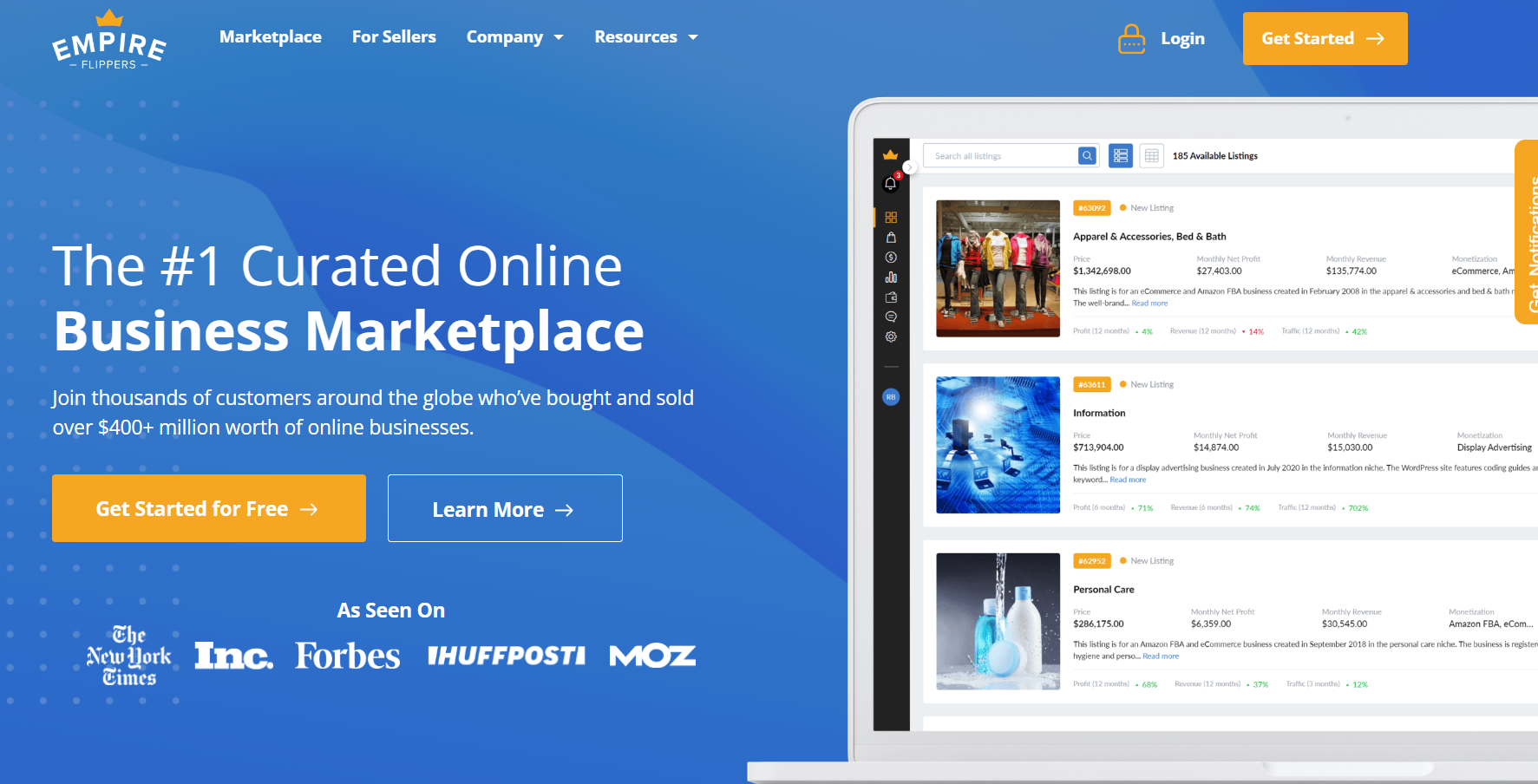
For example, Empire Flippers provides a detailed description for every Shopify store, including details such as their earnings, profits, website visitors, legal information, and seller question and answer sessions. 👇

Through careful examination of various aspects such as technological infrastructure, design elements, and marketing tactics, you can gather valuable insights that fuel your own e-commerce venture.
💡 Tip: Learn about Buying A Shopify Store In 2024 – How And Where To Buy?
3. Use Social Media and Forums for Discovery
The power of social media platforms such as Instagram, TikTok, and Pinterest in showcasing trending products and successful Shopify stores is undeniable. These platforms are a treasure trove of inspiration, teeming with creative ideas and innovative store layouts.
🔸 Harnessing the Potential of Social Media Platforms
So, here’s how to use each platform effectively:
A simple search for specific hashtags related to your niche can lead you to a multitude of Shopify stores.
For instance, if you’re planning to sell handmade soaps, try searching for #handmadesoapshop or similar hashtags.

👉 Check out my Step-By-Step Guide to Instagram Marketing For Dropshipping.
➡ TikTok
This platform is especially useful for spotting trending products through viral videos.
Thus, look out for product tags in videos or check the comments section for any mention of the store’s name. For instance, you can also try the search bar using the keyword “Shopify store for sale”.

💡 Tip: Discover How To Sell On TikTok Shop As an Ecom Beginner In 2024.
Often overlooked, Pinterest is a powerful tool for discovering unique product ideas and store layouts.
Hence, you can search for keywords related to your niche or follow boards that focus on e-commerce and Shopify stores.

👉 Learn How To Sell More With Free Traffic From Pinterest for Ecommerce?
🔸 Exploring Forums for Shopify Stores
In addition to social media, forums are also an excellent avenue to find Shopify stores. So, consider joining Shopify-focused forums where store owners often share their experiences and promote their products.
Thus, forums like the Shopify Community and eCommerceFuel are filled with discussions about successful stores, troubleshooting tips, and marketing strategies.
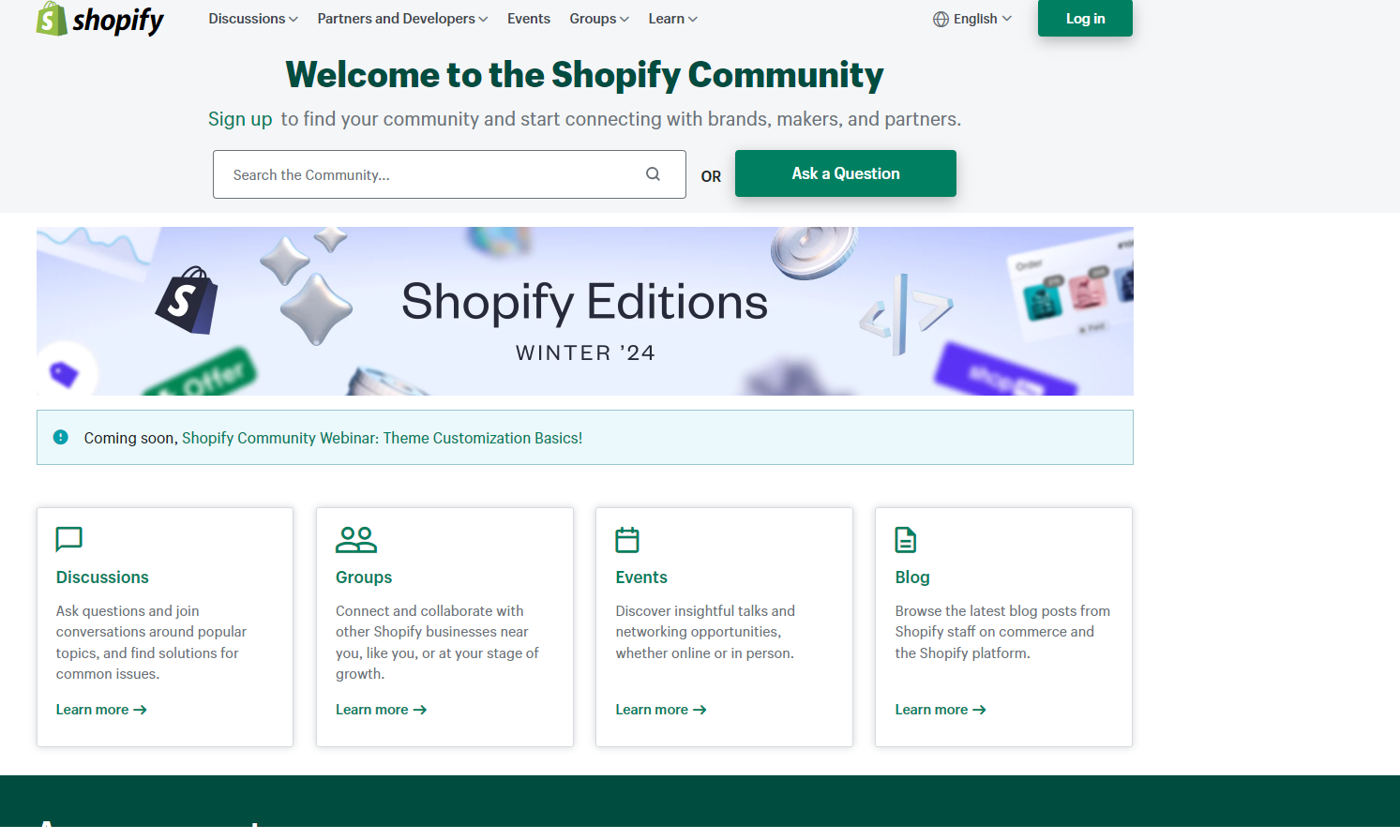
Tip: Remember to engage respectfully with the community members and contribute helpful insights when possible. This not only builds goodwill but also positions you as a thought leader in your niche.
So, put on your digital explorer hat and start discovering some awesome Shopify stores using these social media platforms and forums!
4. Chrome Extensions and Tools for Store Finding
Chrome Extensions serve as a nifty gateway to the treasure trove of e-commerce insights. Specifically, extensions like Shopify Store Locator and Ecom Hunt provide a direct line to discovering Shopify-powered stores. Here’s how they can be particularly useful:
Shopify Store Locator
Shopify offers numerous store locator apps in the Shopify app store. Hence, these tools instantly identify whether a store is powered by Shopify and offer essential details such as theme information and installed apps.
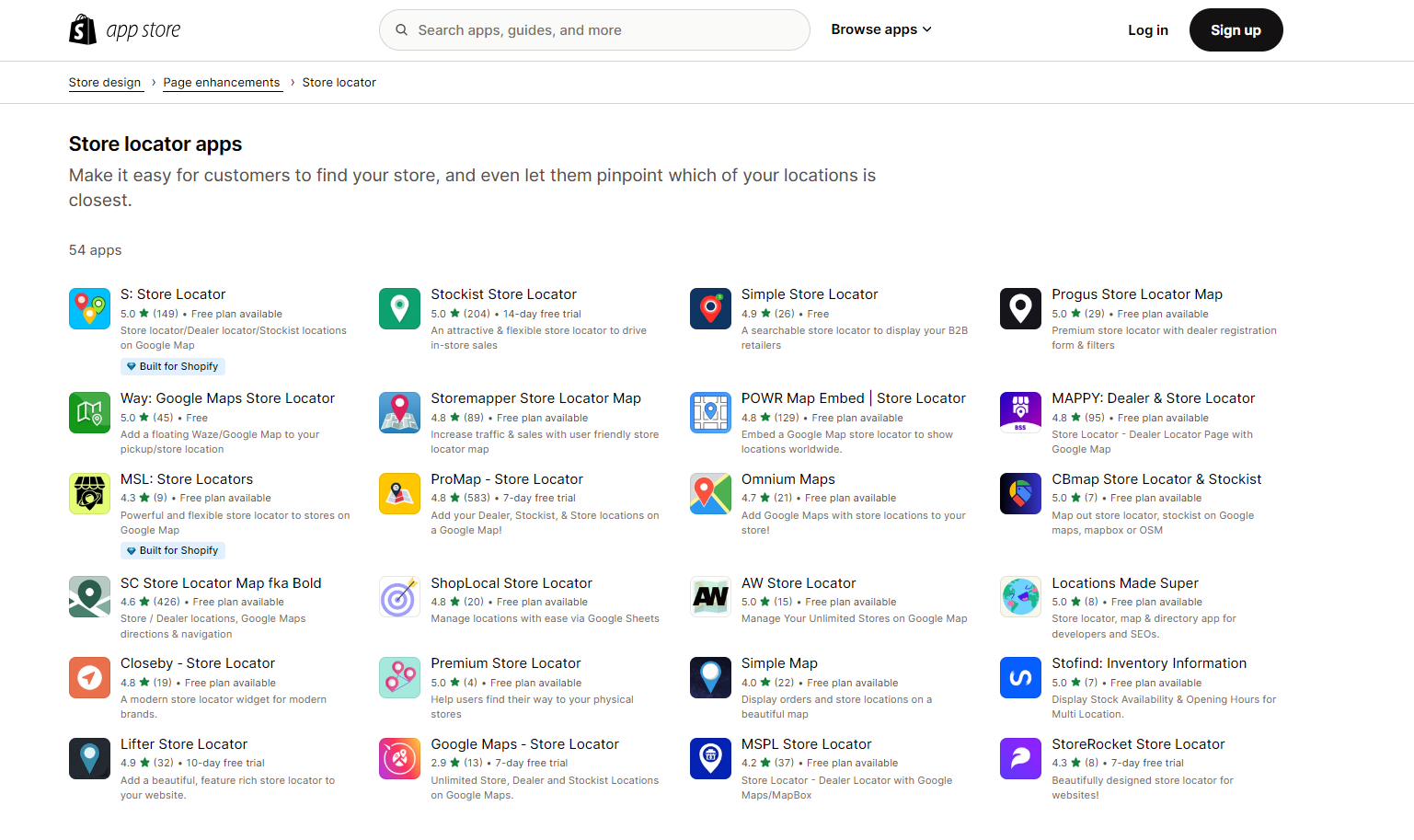
EcomHunt
EcomHunt aids in finding winning products across various Shopify stores, giving you a sense of what’s trending in your niche market.
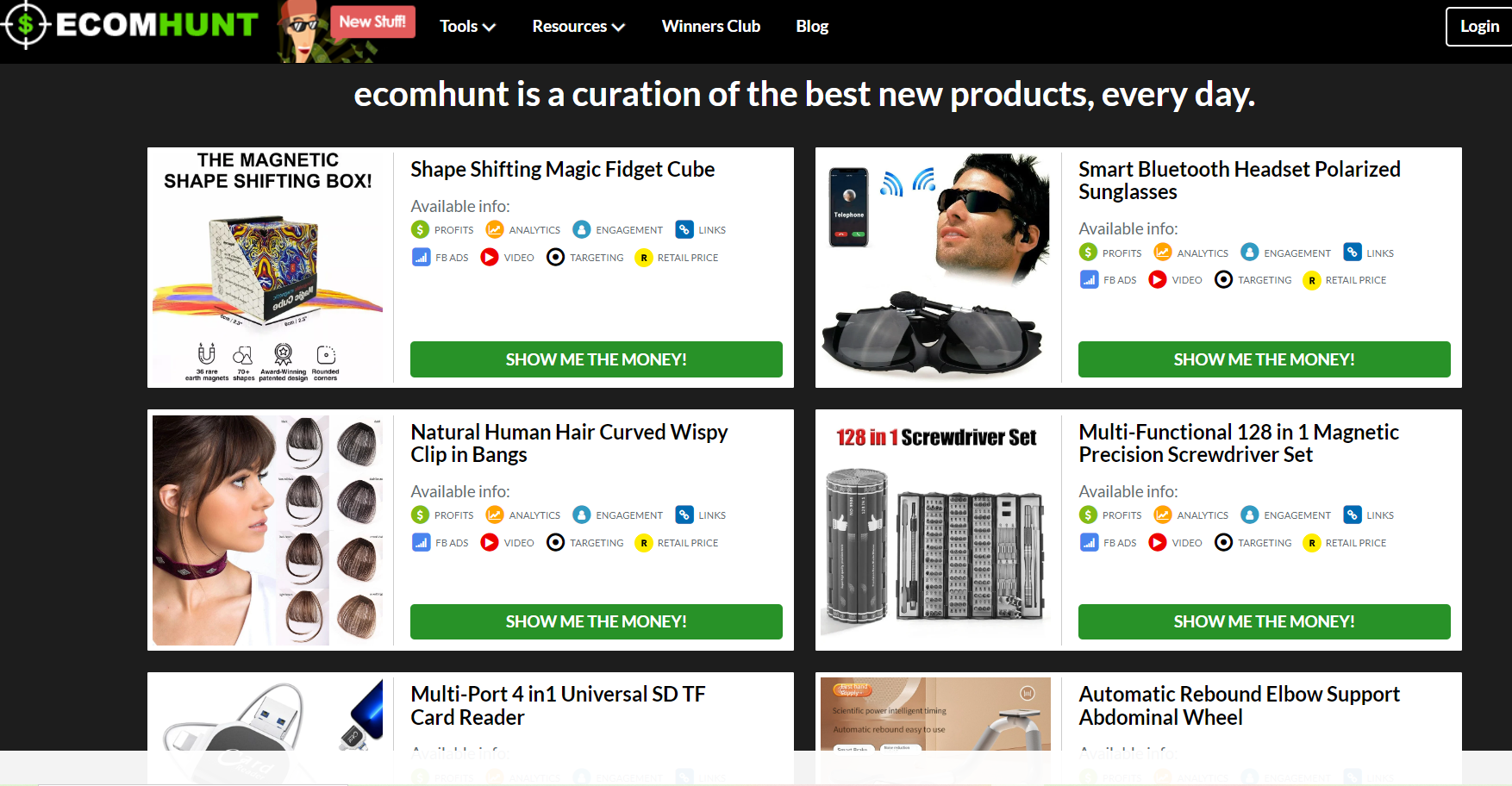
👉 Read my FULL Ecomhunt Review 2024: Find Trending Products For Dropshipping.
Beyond these extensions, there are powerful online tools like Wappalyzer and MyIP.ms that cast a wider net for uncovering Shopify stores.
Wappalyzer breaks down the technologies used on websites, making it simple to filter for Shopify usage across the web.
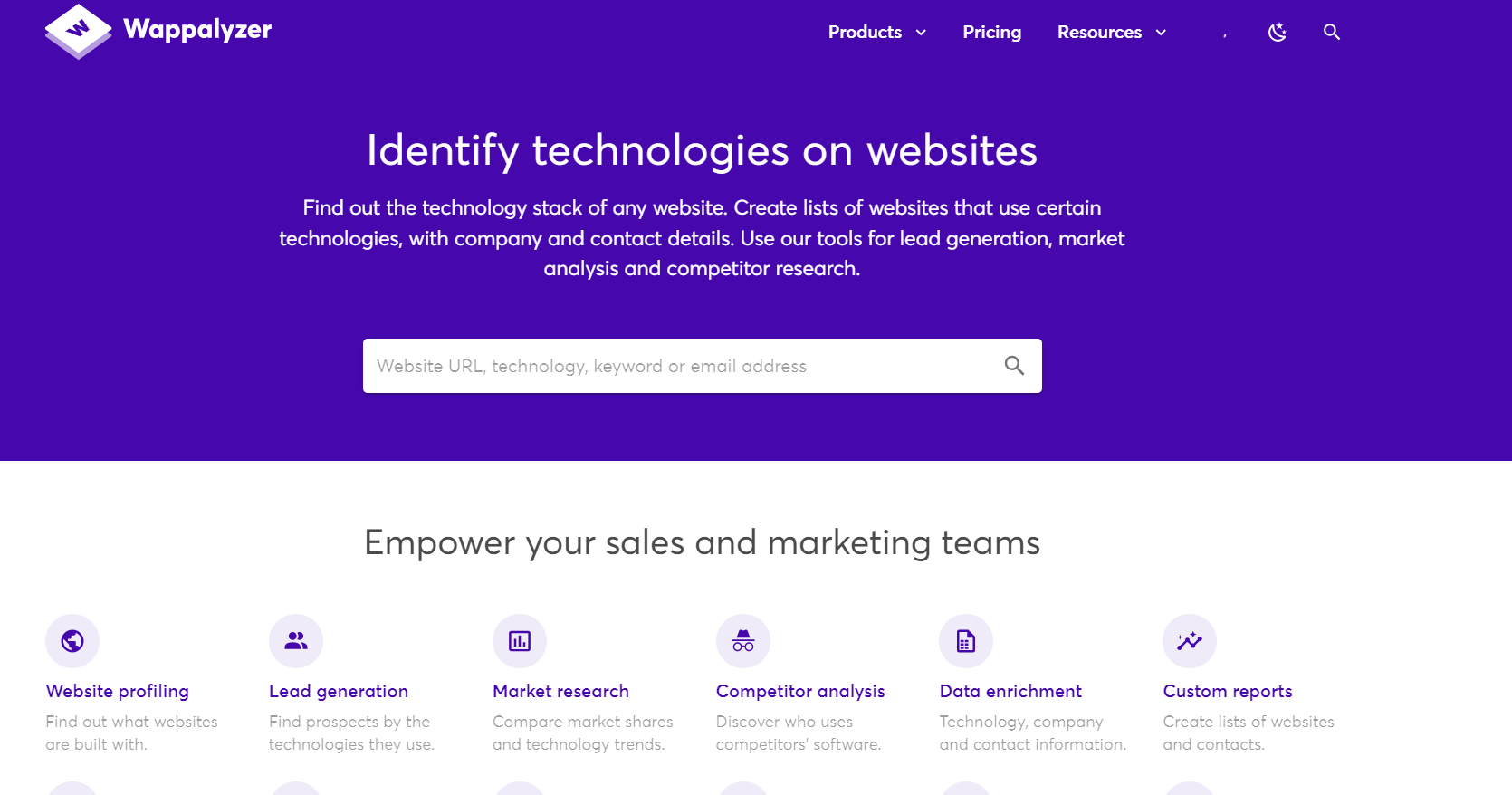
Meanwhile, MyIP.ms tracks IP addresses associated with Shopify’s infrastructure, presenting an alternative approach to finding stores.
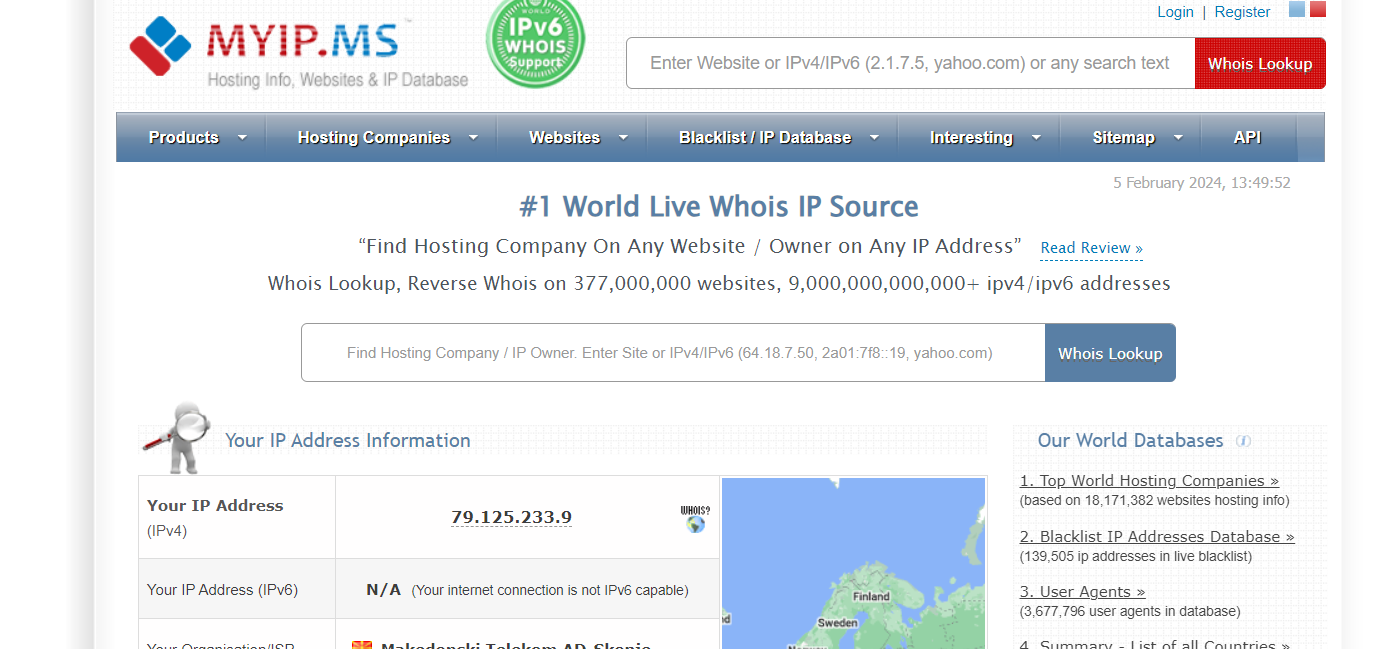
Comparing these resources
So, when comparing these resources, consider:
- Features: Does the tool offer additional insights such as traffic volume or SEO data?
- User Experience: How intuitive is the interface? Time spent navigating complex menus is time away from your business development.
- Accuracy: Ensure the tool has a track record of reliable information.
Specific needs
Also, for specific needs:
- For SEO analysis: Wappalyzer can show which stores are using SEO plugins or have optimized their site structure.
- For competitor research: MyIP.ms allows you to see other stores hosted on the same server, possibly uncovering competitors you weren’t aware of.
These tools are not one-size-fits-all; each carries unique strengths suited for different aspects of your research.
Thus, tailor your toolkit to align with your store’s goals and watch the good stuff roll in as you equip yourself with a deeper understanding of the Shopify landscape. Hence, this is crucial if you are wondering how to find Shopify stores.
5. Unconventional Strategies to Uncover Hidden Shopify Stores
Let’s delve into the world of hidden Shopify stores. Ever noticed the text “Powered by Shopify” at the bottom of many online stores?
This phrase, although subtle, is a golden ticket to discovering exciting stores you might not find otherwise.
1. “Powered by Shopify” Technique
This text is a standard feature in the footer of stores using Shopify’s platform.
Hence, by entering “Powered by Shopify” in quotes into a Google search, you can unearth an array of Shopify websites, both big and small.
However, it’s worth noting that some stores choose to remove or replace this text, so this method won’t reveal every single Shopify store out there. But don’t worry; there are other tricks up our sleeve!
👉 Check out the 50 Biggest Shopify Stores to Inspire Every Dropshipper.
2. Unique Store Identifiers
Every Shopify store has unique identifiers embedded in its source code. And, these are important when it comes to how to find Shopify stores.
They’re often found within the website’s HTML and can include elements such as specific class names or unique scripts.
With a bit of technical know-how and a keen eye for detail, you can use these identifiers to discover hidden gems.
👉 Learn How To Open and Manage Multiple Shopify Stores (Tips + Apps).
3. Advanced Google Search
Google’s advanced search features can be your best friend when hunting for hidden Shopify stores. For instance, using intext:"Shopify.theme" as a search query will return pages where this piece of code (typically found only on Shopify sites) is present within the page’s text.

💡 Tip: Check out the 11 Best Shopify Themes for Dropshipping Stores.
To illustrate, let’s consider a case study: Brand X. A simple Google search didn’t reveal much about its online presence.
However, by searching for unique identifiers found in their source code, we discovered that Brand X had a thriving storefront on Shopify—providing invaluable insights into their product range, pricing strategy, and customer engagement tactics.
By leveraging these unconventional strategies, you can uncover hidden e-commerce landscapes and gain inspiration from successful players operating under the radar!
Inspire Your E-commerce Journey with Inspiration from Shopify Stores
When it comes to continuous learning in e-commerce, finding inspiration from successful stores can be the key to unlocking your store’s potential. But remember, getting inspired is not about replicating what others have done. It’s about gathering ideas, and then adapting and innovating to create your unique e-commerce experience.
➡ Don’t Lose Sight of Your Brand Identity
Keeping a keen eye on how others are doing it doesn’t mean you should lose sight of your unique brand identity. Rather, let it serve as a guidepost for what works and what doesn’t.
“Your brand identity is the voice of your business and a promise to your customers.”
Ensure that whatever strategies you adopt from other stores align with this voice and promise.
➡ Stay Updated with Industry Trends
Staying updated with the latest industry trends and consumer preferences is another essential aspect. Here are some ways to do just that:
- Subscribe to Industry Blogs & Newsletters: These can be a treasure trove of insights on the latest trends, product ideas, and marketing strategies.
- Participate in E-commerce Forums & Groups: Interacting with fellow entrepreneurs can provide firsthand information about what’s working for them.
- Attend Webinars & Online Courses: These platforms provide in-depth knowledge and keep you updated with emerging e-commerce technologies.
The world of e-commerce is constantly evolving. By staying vigilant and receptive to new ideas, you can ensure that your Shopify store continues to thrive in this dynamic landscape.
Top 5 Shopify Stores For Sale To Purchase Today
Once you’ve learned how to find Shopify stores, I will also list some of the top stores for sale today.
Personal Care, Equipment

Started in March 2023, this online store specializes in selling expensive products aimed at older people, with an average purchase worth $1,353. Since it operates using dropshipping, there’s no need to keep products in stock, allowing for a wide range of items to choose from.
One of the strong points of the business is that a big chunk of its website visitors come from people finding it through online searches (38%), and the cost of advertising on Google (TACoS) is quite low at 11%.
The store has a total of 31 suppliers, with most of them (30) based in the USA and one in Canada. Even though the conversion rate is low, standing at 0.25% according to Shopify Analytics, there’s an opportunity for improvement in this area.

The business is run by two partners who put in a combined total of 8 hours a week. Their tasks include answering customer calls, handling Google Ads, occasionally posting blog articles written by AI, and building links.
- Listing Price: $115,600
- Monthly Multiple: 32x
- Pricing Periods: 10 Months
- Avg. Monthly Profit: $3,613.00
- Avg. Monthly Revenue: $23,656.00
- Profit Margin: 15%
Occasions & Gifts

This offer is about an online store established in January 2023, focusing on gifts and special occasions. It specializes in personalized lights. The business enjoys good profit margins, almost 50%, and a majority of its visitors, 77%, come from natural searches.

With a supplier based in the US, orders are made as needed and handled by the supplier. Also, the main countries contributing to website traffic are the US (54.23%), the UK (9.91%), and Germany (4.13%).
- Listing Price: $92,182
- Monthly Multiple: 32x
- Pricing Periods: 12 Months
- Avg. Monthly Profit: $2,881.00
- Avg. Monthly Revenue: $6,341.00
- Profit Margin: 45%
Art, Office Supply

This listing presents an e-commerce and Amazon FBA venture that began in October 2022, focusing on art and office supplies. The products mainly revolve around stationery items.
The business has seen impressive year-on-year growth, reaching 288%, and maintains healthy profit margins at 19.88%.
Furthermore, revenue is distributed among various channels, with Amazon US accounting for 21.3%, Amazon UK for 12.5%, and the rest from Shopify.
However, the TaCOS, standing at an average of 42.29% over the last year, is primarily due to Shopify’s reliance on paid traffic for generating revenue.
Regarding the Shopify website traffic, it comes from various sources, including paid social (50%), paid search (12.58%), organic social (10.91%), organic search (10%), and direct (14.96%). The primary countries contributing to traffic are the US (69.65%), GB (26.77%), and IE (0.35%).

With one supplier located in China, inventory is stored in fulfillment centers in California and the UK, as well as Amazon FBA warehouses.
- Listing Price: $1,165,861
- Monthly Multiple: 43x
- Pricing Periods: 12 Months
- SKUs: 66
- Brand Registry: Yes
- Avg. Monthly Profit: $27,113.00
- Avg. Monthly Revenue: $134,927.00
- Profit Margin: 20%
Kitchenware

To help you out with your “how to find shopify stores” journey, I will list a few more stores for sale.
This offer is for an Amazon FBA enterprise founded in May 2021, specializing in kitchenware. The account is part of the Amazon Brand Registry and offers 9 different drinkware items.
The business is firmly rooted and typically sees a net profit margin averaging 14.14%. The top five items have an average rating of 4.62 out of 5 stars, indicating customer satisfaction.

Additionally, the business demands very little time for upkeep.
With one supplier based in China, inventory is shipped straight to Amazon FBA warehouses. Any surplus inventory is stored at a 3PL warehouse.
- Listing Price: $198,802
- Monthly Multiple: 34x
- Pricing Periods: 10 Months
- SKUs: 9
- Brand Registry: Yes
- Avg. Monthly Profit: $5,847.00
- Avg. Monthly Revenue: $44,684.00
- Profit Margin: 13%
Health & Fitness

Established in September 2015, this website operates in the fitness sector, specifically focusing on a particular form of strength training. It engages in affiliate marketing, display advertising, and participates in the Amazon Associates program.
The website offers various content types, including workout plans, reviews of workout programs and apps, and exercise guides. One notable strength of the business is its consistent growth in traffic over the years, indicating growing interest and engagement from its audience.
Additionally, its SemRush Authority Score of 16 suggests it’s a developing site with room for further growth and recognition within the niche.

Revenue primarily comes from affiliate marketing, making up 81% of total income, followed by display advertising at 17%, and a small portion from Amazon Associates at 2%.
Although the site operates on a .co.uk domain, its traffic is diverse, with 35% from the US, 17% from the UK, and 5% from Canada, indicating a substantial English-speaking audience and potential for international expansion.
- Listing Price: $126,406
- Monthly Multiple: 37x
- Pricing Periods: 12 Months
- Avg. Monthly Profit: $3,416.00
- Avg. Monthly Revenue: $3,437.00
- Profit Margin: 99%
How To Find Shopify Stores FAQs
1. How can I assess the credibility and performance of the Shopify stores I find?
Assessing the credibility and performance of Shopify stores involves a multifaceted approach. Initially, it’s vital to look at customer reviews and testimonials, which can often be found on the store’s website or third-party review sites like Trustpilot or Google Reviews.
These reviews give insight into the customer experience, product quality, and reliability of the store. Additionally, examining social media presence and engagement can offer clues about the store’s reputation and how it interacts with its customers.
Another key aspect is analyzing the store’s aesthetics and functionality, which reflects on their professionalism and brand value.
A well-designed, user-friendly website often correlates with a credible business. Furthermore, utilizing tools like SimilarWeb or Alexa can provide data on website traffic, audience demographics, and engagement, offering a glimpse into the store’s popularity and reach.
Finally, checking the domain age with tools like WHOIS can reveal how long the store has been in operation, as older domains may indicate a longer-standing business.
However, it’s important to remember that new stores can also be credible; they might simply be in the early stages of building their online presence.
2. What are the common challenges or pitfalls to avoid when searching for Shopify stores for inspiration, and how can they be overcome?
One common challenge is the potential for information overload, as the internet is saturated with countless Shopify stores across various niches.
To overcome this, it’s beneficial to have clear criteria for what you’re looking for and use specific search operators to narrow down results.
Another pitfall is the risk of drawing inspiration from stores that may not be successful or credible. This can be mitigated by conducting thorough research into a store’s performance and reputation, as previously discussed.
Moreover, there’s a temptation to focus only on aesthetics without considering the store’s backend operations and customer service practices, which are crucial for long-term success.
Engaging with the store as a customer, by subscribing to newsletters or making a small purchase, can provide deeper insights into their operational excellence.
3. How do you evaluate the success of a Shopify store before deciding to draw inspiration from it?
Evaluating the success of a Shopify store involves examining both qualitative and quantitative aspects.
Sales figures, traffic data, and conversion rates are primary quantitative metrics that indicate a store’s performance.
So, tools like Google Analytics (if access is possible), SEMrush, or Ahrefs can provide valuable data on traffic sources and volumes, search engine rankings, and customer behavior.
On the qualitative side, brand reputation, customer loyalty, and market positioning play critical roles.
Success can also be measured by the store’s ability to maintain a strong social media following, high levels of customer engagement, and positive reviews across multiple platforms.
Analyzing the store’s content marketing efforts, the quality of its product photography, and the uniqueness of its value proposition can also provide insights into its success and innovation.
4. Are there specific examples of Shopify stores that were transformed by inspiration from others?
While the original blog post does not provide specific examples, the e-commerce world is replete with success stories of Shopify stores that thrived by drawing inspiration from others.
A common narrative includes stores that identified a gap in their market through competitive analysis and then adapted successful strategies from leading competitors while infusing their unique brand identity and value proposition.
These transformations often involve revamping website design for better user experience, employing advanced SEO strategies, optimizing their marketing approach, or diversifying their product offerings based on observed market trends.
However, each store must adapt these inspirations to their unique context rather than replicating them directly.
5. How can someone ensure that their use of inspiration does not cross into copying or infringement?
Ensuring that the use of inspiration remains ethical involves several important considerations.
First, it’s crucial to use inspiration as a springboard for innovation rather than imitation. This means taking general concepts or strategies and then applying your creative twist to them.
When it comes to design elements, it’s important to create original work that merely echoes the inspiration’s vibe or theme rather than duplicating specific designs or content.
Additionally, understanding and respecting intellectual property rights is essential.
This involves avoiding the use of trademarked names, logos, or proprietary designs without permission. When in doubt, seeking legal advice can help navigate these complexities.
Lastly, maintaining transparency with your audience about your inspirations can also help mitigate any potential issues, highlighting your commitment to ethical business practices.


Conclusion
E-commerce thrives on innovation and adaptability, and discovering how to find Shopify stores for inspiration is a cornerstone in constructing your own successful online business. Remember, inspiration is just the beginning; the magic happens when you apply what you learn and make it uniquely yours.
Embrace the diverse tactics shared in this article:
- Utilize search operators and SERPs to pinpoint niche-specific Shopify stores.
- Dive into online directories like BuiltWith or marketplaces such as Shopify Exchange to see what’s already succeeding.
- Engage with social media trends and discussions to uncover stores that resonate with current consumer interests.
- Harness the power of Chrome extensions and digital tools designed to reveal the e-commerce landscape in detail.
- Apply unconventional strategies to unearth hidden gems that could spark your next big idea.
Blend these strategies for a well-rounded view of what’s out there. Keep your fingers on the pulse of e-commerce evolution, and let your Shopify store be a reflection of both industry best practices and your distinctive brand identity.
So, now set forth, explore, and let other Shopify stores spark the inspiration that fuels your e-commerce journey.













![The Top 21 3PL Companies Compared [2024 List & Guide]](https://images.weserv.nl/?url=https://prod-dropshipping-s3.s3.fr-par.scw.cloud/2024/03/Frame-3922469.jpg&w=420&q=90&output=webp)